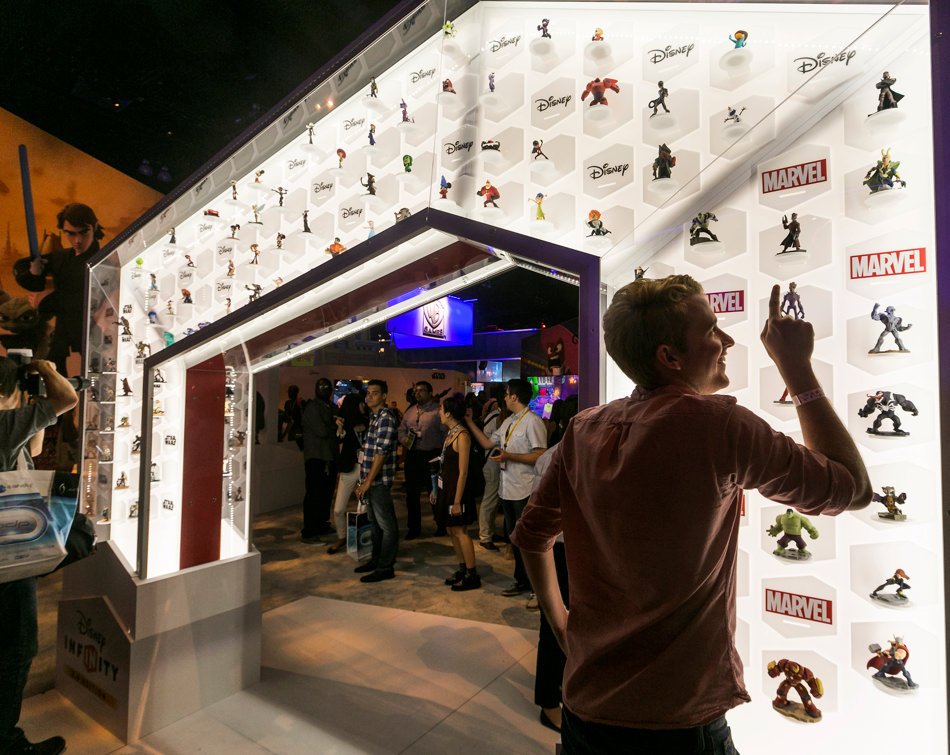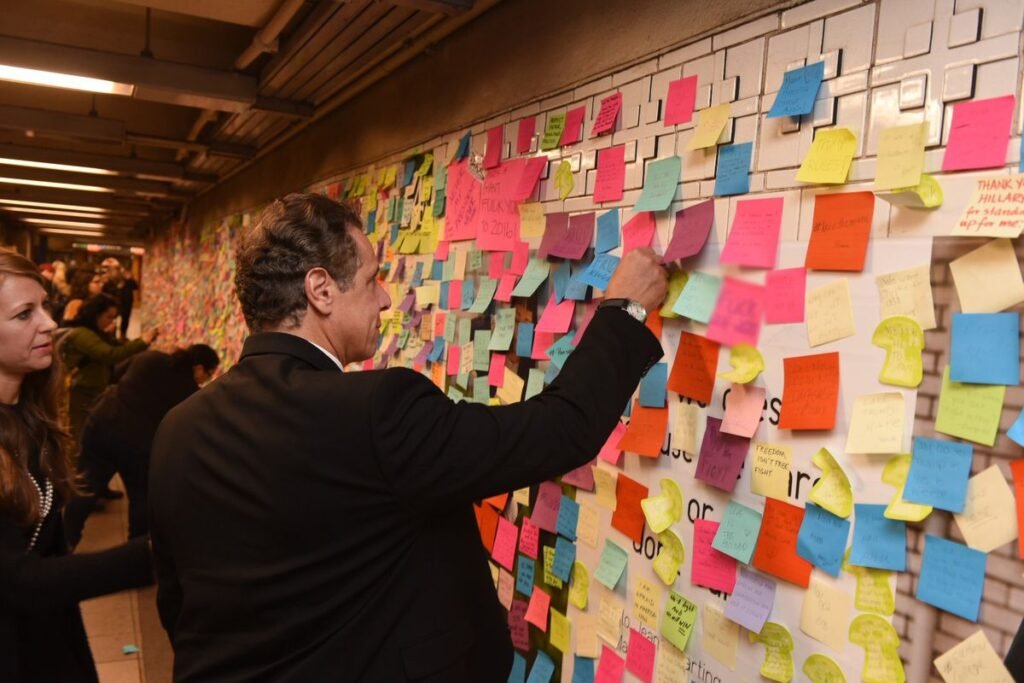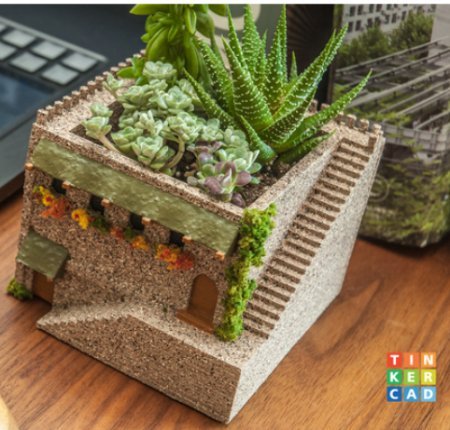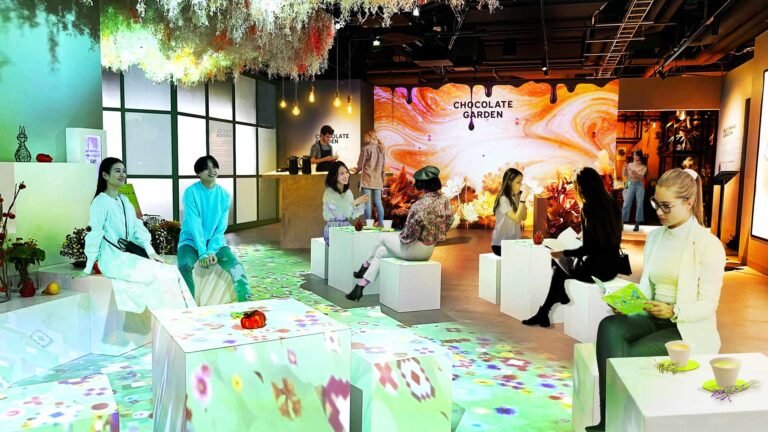Engaging Interactive Decorations
So, you’ve stumbled upon Engaging Interactive Decorations. Pretty cool name, isn’t it? Well, that’s because our aim is to bring you a whole new level of interaction when it comes to decorations. Imagine walking into a room and being greeted by a living, breathing decoration that responds to your touch or movement. Yeah, we’re all about making your space come alive with interactive elements that will leave your guests mesmerized.
At Engaging Interactive Decorations, we believe that a decoration shouldn’t just be something you look at, but rather something that engages all your senses. We’ve got a wide range of interactive pieces that will add that extra oomph to any space, whether it’s your home, office, or event venue. From interactive light fixtures that change color based on your mood to kinetic sculptures that gracefully dance to the rhythm of music, we’ve got it all. So, why settle for ordinary when you can have extraordinary? Come and explore the world of Engaging Interactive Decorations and bring your space to life like never before.

This image is property of nationaleventpros.com.
Benefits of Engaging Interactive Decorations
Enhances Customer Experience
Engaging interactive decorations have the power to transform the customer experience by immersing individuals in a dynamic and interactive environment. Instead of being passive observers, customers become active participants in their surroundings. This increased level of engagement leads to a more memorable and enjoyable experience. Whether it’s a virtual reality gaming zone that transports players into a virtual world or a projection mapping display that creates a mesmerizing visual spectacle, engaging interactive decorations bring a sense of wonder and excitement to the customer experience.
Increases Customer Engagement
One of the primary benefits of engaging interactive decorations is their ability to captivate and hold the attention of customers. Traditional static decorations may catch the eye momentarily, but they often fail to create a lasting impression. On the other hand, interactive decorations provide a dynamic and ever-changing experience that keeps customers engaged and curious. This increased level of engagement can lead to longer customer dwell times, increased brand exposure, and ultimately, higher conversion rates.
Creates a Memorable and Unique Atmosphere
Engaging interactive decorations have the power to transform any space into a memorable and unique environment. By integrating technology and interactivity into the decor, businesses can create a one-of-a-kind atmosphere that sets them apart from competitors. Whether it’s a restaurant with interactive lighting that changes colors based on the music playing or a trade show booth with projection mapping that showcases product features, these decorations attract attention, make a lasting impression, and create a sense of novelty that customers will remember.
Provides Opportunities for User-Generated Content
In today’s digital age, user-generated content has become a powerful marketing tool. Engaging interactive decorations provide opportunities for customers to create and share their own content, such as photos and videos, on social media platforms. This user-generated content not only increases brand visibility but also acts as a form of endorsement, as customers willingly share their positive experiences with others. By incorporating interactive elements into their decorations, businesses can encourage customers to become brand advocates and spread the word organically.
Boosts Social Media Presence
Engaging interactive decorations have the potential to go viral on social media platforms, increasing a business’s online presence and reach. When customers encounter captivating and novel interactive decorations, they are more likely to snap a photo or record a video to share with their followers. The visual appeal and uniqueness of interactive decorations make them highly shareable content, amplifying exposure and attracting new customers. By strategically designing decorations with social media in mind, businesses can tap into the power of online word-of-mouth marketing.
Types of Engaging Interactive Decorations
Projection Mapping
Projection mapping involves the use of projectors to overlay images or videos onto three-dimensional objects, creating a visually stunning and immersive experience. This technology can transform any static object, such as a building facade or a sculpture, into a dynamic canvas for storytelling and visual effects. By mapping projected content to the contours of the object, projection mapping creates the illusion of movement and depth, captivating audiences and creating memorable experiences.
Augmented Reality
Augmented reality (AR) overlays digital content onto the real world, enhancing the user’s perception and interaction with their surroundings. Through the use of mobile devices or specialized AR glasses, users can see computer-generated images, animations, or information overlaid on top of the physical environment. Augmented reality can be used to gamify experiences, provide informative visual guides, or even add virtual characters to the real world. By bridging the gap between the physical and digital realms, augmented reality brings a new level of interactivity and engagement to decorations.
Virtual Reality
Virtual reality (VR) technology immerses users in a simulated environment, transporting them to a different place or time. By wearing a VR headset, users are fully immersed in a virtual world that can be visually and audibly interactive. Virtual reality can be used to create gaming experiences, virtual tours of real-world locations, or even simulate training scenarios. With its ability to completely immerse users in a digital space, virtual reality is an ideal choice for highly engaging and memorable interactive decorations.
Interactive Lighting
Interactive lighting uses sensors and control systems to create dynamic lighting effects that respond to human presence or other stimuli. This type of decoration is often used to enhance the atmosphere of a space, create visual interest, or synchronize lighting with audio or video content. From color-changing LED lights that react to movement to interactive LED walls that respond to touch, interactive lighting adds a layer of interactivity and excitement to any environment.
Motion Sensors
Motion sensors detect movement in their surroundings and can trigger various responses or interactive elements. They can be used to activate lighting, sound effects, video projections, or even trigger physical objects to move or change. Motion sensors are often employed in interactive installations where the movements of participants directly influence the behavior of the decorations. Whether it’s a dance floor that lights up with every step or an interactive art piece that responds to gestures, motion sensors make decorations come alive through user interaction.
Examples of Engaging Interactive Decorations
Interactive Digital Art Installations
Interactive digital art installations combine technology, art, and interactivity to create immersive and thought-provoking experiences. These installations can range from large-scale, multi-sensory environments to smaller, intimate interactions. For example, “Rain Room” by Random International is an installation that allows visitors to walk through a continuous downpour without getting wet, thanks to motion sensors that detect the presence of individuals and temporarily stop the rain. These interactive art installations captivate audiences, encourage exploration, and provoke emotional responses.
Virtual Reality Gaming Zones
Virtual reality gaming zones provide a fully immersive gaming experience, allowing players to step into virtual worlds and interact with their surroundings. These zones often feature high-quality VR headsets and controllers that enable players to physically engage with the virtual environment. Companies like The VOID have created VR experiences that go beyond traditional gaming, incorporating physical elements, multiplayer interactions, and even scent and temperature effects. Virtual reality gaming zones attract gamers of all ages, offering a thrilling and immersive entertainment experience.
Projection Mapping on Buildings
Projection mapping on buildings turns ordinary facades into dynamic and captivating canvases. By precisely mapping visual content onto the architectural elements of a building, projection mapping can create the illusion of movement, transform the appearance of surfaces, and tell engaging stories. An iconic example is the Sydney Opera House during the annual Vivid Sydney festival, where artists use projection mapping to transform the sails of the building into a mesmerizing display of light and color. Projection mapping on buildings creates a spectacle that attracts crowds, generates buzz, and leaves a lasting impression.
Interactive LED Dance Floors
Interactive LED dance floors are a perfect example of engaging interactive decorations that combine technology and entertainment. These dance floors are equipped with LED lights that respond to movement and dance steps, creating vibrant and visually captivating displays. Whether it’s a dance club looking to enhance the energy of the dancefloor or a special event seeking to provide an unforgettable experience, interactive LED dance floors add an extra element of fun and excitement to any gathering.
Interactive Photo Booths
Interactive photo booths have become a staple at events and social gatherings, allowing guests to take unique and interactive photos that can be instantly shared with friends and family. These photo booths often incorporate features like animated backdrops, augmented reality filters, or even greenscreens for customizable backgrounds. By providing an interactive and entertaining experience, interactive photo booths encourage guests to engage with the decorations, capture memorable moments, and share their experience on social media.
Integration of Engaging Interactive Decorations in Events
Conferences and Trade Shows
Engaging interactive decorations are an effective way to captivate attendees and leave a lasting impression at conferences and trade shows. By incorporating interactive elements, businesses can stand out among a sea of booths and presentations. For example, a company specializing in virtual reality solutions can set up interactive VR demos that allow attendees to experience their products or services firsthand. This not only attracts visitors to the booth but also provides an engaging and memorable interaction that enhances brand recognition.
Retail Stores and Pop-up Shops
Retail stores and pop-up shops can benefit greatly from engaging interactive decorations. By creating a dynamic and interactive shopping environment, businesses can increase customer engagement and drive sales. For instance, a clothing store might install interactive mirrors that allow customers to virtually “try on” different outfits without changing clothes. This interactive experience not only makes shopping more enjoyable and convenient but also encourages customers to spend more time in the store and make informed purchasing decisions.
Theme Parks and Amusement Parks
Theme parks and amusement parks have long been incorporating engaging interactive decorations to enhance the visitor experience. From interactive rides and shows to interactive exhibits and displays, these parks create immersive environments that thrill and entertain visitors. For example, Universal Studios’ Wizarding World of Harry Potter features wand-based interactive experiences, where visitors can cast spells and make magic happen throughout the park. This seamless integration of interactive elements with the park’s themed environment creates an enchanting and immersive experience for park guests.
Restaurants and Bars
The restaurant and bar industry can benefit from engaging interactive decorations by creating an atmosphere that captures the attention and interest of diners. For example, a sports bar might install interactive tabletops where customers can play games or watch live sports updates while waiting for their food. This not only entertains customers but also encourages them to stay longer, order more drinks, and return in the future. By incorporating interactive elements into the decor, restaurants and bars can create a unique dining experience that sets them apart from the competition.
Weddings and Other Special Occasions
Engaging interactive decorations can transform weddings and other special occasions into unforgettable experiences for guests. For instance, couples can incorporate interactive elements like augmented reality photo booths or interactive projection mapping onto the wedding venue to create a personalized and visually stunning event. These interactive decorations provide entertainment and engagement throughout the celebration, leaving a lasting impression on guests and creating cherished memories.

This image is property of nationaleventpros.com.
Design Considerations for Engaging Interactive Decorations
Seamless Integration with Existing Decor
When implementing engaging interactive decorations, it’s crucial to ensure they seamlessly integrate with the existing decor and ambiance of the space. The decorations should complement the overall aesthetic and atmosphere rather than appear as separate entities. By aligning the interactive elements with the existing design elements, businesses can create a cohesive and immersive experience that feels natural and enhances the overall environment.
Attention to Safety Regulations
Safety is paramount when incorporating engaging interactive decorations, especially in public spaces or venues where many people will be present. Whether it’s ensuring proper installation of equipment, implementing measures to prevent accidents, or adhering to electrical and fire safety regulations, businesses must consider safety at every stage of the design and implementation process. This includes regular inspections and maintenance to ensure that the interactive decorations remain safe and operational over time.
User-Friendly Interfaces
When designing engaging interactive decorations, it’s essential to prioritize user-friendliness. The interactive elements should be intuitive and easy to use, regardless of the user’s level of technological know-how. Clear instructions and visual cues can help guide users, ensuring they can fully enjoy and interact with the decorations without confusion or frustration. By prioritizing user experience and minimizing barriers to engagement, businesses can maximize the impact of their interactive decorations.
Sense of Novelty and Surprise
Engaging interactive decorations should evoke a sense of novelty and surprise to capture and maintain the attention of users. By incorporating unexpected or unexpected elements, businesses can create moments of delight and intrigue. For example, an interactive lighting installation could change colors based on the movements of passersby, creating a sense of wonder and surprise that encourages further interaction. By providing a dynamic and varied experience, businesses can keep customers engaged and interested.
Consistency with Brand Identity
While engaging interactive decorations offer endless creative possibilities, it’s important to ensure they align with the brand identity and positioning of the business. The interactive elements should contribute to the overall brand story and image, rather than feeling disconnected or out of place. By maintaining consistency with brand colors, aesthetics, and messaging, businesses can create a seamless and unified experience that reinforces their brand identity and resonates with their target audience.
Challenges in Implementing Engaging Interactive Decorations
Technical Limitations
Implementing engaging interactive decorations often involves integrating various technologies, which can present technical challenges. Compatibility issues, programming complexities, or limitations in hardware capabilities may arise during the design and implementation process. It’s important to work closely with experienced professionals who can navigate these technical challenges and ensure that the interactive decorations function as intended.
High Initial Investment
Engaging interactive decorations can require a significant upfront investment in technology, equipment, and installation. The costs associated with purchasing or developing interactive hardware and software, acquiring specialized equipment like projectors or sensors, and hiring professionals for design and installation can add up quickly. Businesses must carefully evaluate the potential return on investment and consider the long-term benefits before committing to implementing engaging interactive decorations.
Maintenance and Upkeep
Once engaging interactive decorations are implemented, they require ongoing maintenance and upkeep to ensure optimal performance and longevity. Regular inspections, software updates, and equipment maintenance are necessary to address any technical issues or wear and tear. Additionally, as technology advances, businesses may need to update or replace interactive components to stay current and provide the best possible experience to customers.
Integration with Other Systems
Incorporating engaging interactive decorations into existing systems, such as lighting, audio, or security, may require seamless integration to ensure smooth operation. Collaboration with professionals in each respective field is essential to ensure that the interactive decorations can interact harmoniously with other systems. This integration enables the decorations to respond to various triggers like motion, lighting, or sound, enhancing the overall interactive experience.
Training Staff and Users
Engaging interactive decorations may require staff training to operate and maintain the interactive elements effectively. Staff members must be equipped with the necessary knowledge to troubleshoot technical issues, guide users, and ensure a positive interactive experience. Additionally, users may need guidance or instructions to fully understand and utilize the interactive elements. Clear signage, user-friendly interfaces, and on-site assistance can help bridge the gap and empower both staff and users to make the most of the engaging interactive decorations.

This image is property of nationaleventpros.com.
Best Practices for Successful Engaging Interactive Decorations
Understanding the Target Audience
Before implementing engaging interactive decorations, it’s important to have a deep understanding of the target audience. Consider their preferences, interests, and expectations to tailor the interactive experience to their needs. By understanding the target audience, businesses can create interactive decorations that resonate with their interests, encourage engagement, and leave a lasting impression.
Creating a Cohesive Experience
Engaging interactive decorations should be part of a cohesive and memorable overall experience. Consider how the interactive elements fit into the broader narrative or story that the business aims to tell. By creating a well-rounded and immersive experience that integrates interactive decorations seamlessly with other elements such as music, visuals, or spatial design, businesses can create an unforgettable experience for their audience.
Regularly Updating and Refreshing the Decorations
To maintain interest and engagement, engaging interactive decorations should be regularly updated or refreshed. This might involve changing the interactive content, introducing new interactive elements, or evolving the interactive experience based on user feedback. By keeping the interactive decorations fresh and exciting, businesses can capture the attention of returning customers and attract new visitors.
Implementing Interactive Elements Seamlessly
Engaging interactive decorations should be implemented seamlessly to avoid interrupting the flow of the user experience. The interactive elements should enhance and augment the environment without feeling forced or disconnected. Businesses should carefully consider the placement, accessibility, and interaction design of the decorations to ensure a smooth and intuitive user experience.
Collecting and Analyzing User Feedback
Collecting and analyzing user feedback is crucial for continuously improving the interactive experience. Businesses should actively seek input from users, whether it’s through surveys, social media interactions, or direct conversations. By understanding user preferences, pain points, and suggestions, businesses can make informed decisions and iterate on the design and implementation of engaging interactive decorations.
Case Studies: Successful Implementation of Engaging Interactive Decorations
The Museum of Interactive Art in New York
The Museum of Interactive Art in New York (Ivry) is a prime example of successful implementation of engaging interactive decorations. Ivry offers visitors a unique and immersive experience through the use of interactive art installations. From projection mapping displays that respond to audience movements to interactive sculptures that encourage tactile exploration, Ivry provides a dynamic and captivating environment that pushes the boundaries of traditional art exhibits. By integrating interactive elements seamlessly into the artwork, Ivry attracts art lovers and tech enthusiasts alike, creating a memorable and immersive experience.
Nike’s Interactive Retail Store
Nike’s interactive retail store in New York City showcases how engaging interactive decorations can enhance the retail experience. The store incorporates interactive technology throughout, enabling customers to personalize their shopping journey. From interactive touchscreen displays that provide product information and customization options to augmented reality experiences that allow customers to try on virtual shoes, Nike’s interactive retail store creates an engaging and interactive environment that complements the brand’s innovative and forward-thinking image.
Disney’s MagicBands
Disney’s MagicBands have revolutionized the visitor experience at their theme parks. These wearable devices serve as the key to a seamlessly connected and interactive experience, allowing visitors to access attractions, make purchases, and interact with the park in unique ways. Through the MagicBand, visitors can unlock interactive surprises, personalize experiences, and even have their photos and videos automatically linked to their account. Disney’s MagicBands create a magical and immersive experience that enhances the overall visit to their parks.
Burberry’s Shanghai Flagship Store
Burberry’s Shanghai flagship store showcases the integration of engaging interactive decorations to create a cutting-edge retail experience. The store features large-scale interactive digital screens that respond to customer movements and touch. These screens allow visitors to explore the latest collections virtually, browse product details, and even customize their own designs. By combining technology with luxury fashion, Burberry’s Shanghai flagship store creates an immersive and interactive shopping experience that aligns with their brand’s innovative image.
Coca-Cola’s Interactive Vending Machines
Coca-Cola’s interactive vending machines have become iconic examples of engaging interactive decorations. These machines go beyond the traditional concept of buying a beverage and instead provide an interactive experience for users. From touchscreens that allow customers to personalize their drinks to games and contests that encourage interaction, Coca-Cola’s interactive vending machines create a memorable and engaging experience that leaves a lasting impression on customers.

This image is property of nationaleventpros.com.
Future Trends in Engaging Interactive Decorations
Artificial Intelligence Integration
Artificial intelligence (AI) presents exciting opportunities for engaging interactive decorations. By integrating AI technologies like machine learning and natural language processing, decorations can become smarter and more responsive to user interactions. AI-powered interactive decorations can adapt to individual preferences, provide personalized recommendations, and even anticipate user needs, creating highly tailored and immersive experiences.
Mixed Reality Experiences
Mixed reality, which combines elements of virtual reality and augmented reality, is on the horizon of engaging interactive decorations. Through mixed reality experiences, users can interact with virtual objects and characters that are seamlessly integrated into their physical environment. This technology allows for highly immersive and interactive decorations that blend the best of both virtual and physical worlds.
Personalization and Customization
In the future, engaging interactive decorations will increasingly offer personalized and customizable experiences. Through advanced data analytics and user profiling, businesses can tailor interactive elements to match individual preferences and interests. Whether it’s personalized recommendations, customized interactive experiences, or interactive elements that adapt based on user feedback, personalization and customization will become key trends in engaging interactive decorations.
Internet of Things Connectivity
The Internet of Things (IoT) has the potential to revolutionize engaging interactive decorations by connecting various elements and devices seamlessly. By integrating interactive decorations with IoT technologies, businesses can create dynamic and highly responsive environments. For example, an IoT-enabled interactive lighting system could adjust its colors and patterns based on real-time data, such as weather conditions or user behavior. This connectivity enhances the interactivity and impact of decorations, creating immersive experiences that adapt and respond to the surrounding environment.
Gamification of Interactive Decorations
Gamification, the integration of game elements and mechanics into non-game contexts, will continue to play a significant role in engaging interactive decorations. By infusing interactive decoration experiences with game-like elements, businesses can increase engagement and motivation. This can be achieved through features such as leaderboards, achievements, challenges, or rewards. Gamifying interactive decorations adds a sense of playfulness, competition, and accomplishment, encouraging users to fully engage and spend more time interacting with the decorations.
Conclusion
Engaging interactive decorations have the power to transform the way we engage with our surroundings, providing unique, immersive, and memorable experiences. By understanding the benefits, types, and considerations associated with engaging interactive decorations, businesses and event organizers can create truly immersive and memorable experiences for their audience. As technology continues to advance, the possibilities for interactive decorations are limitless. By embracing the potential of engaging interactive decorations, businesses can stay ahead of the curve, captivate their audience, and create unforgettable experiences that leave a lasting impression.






